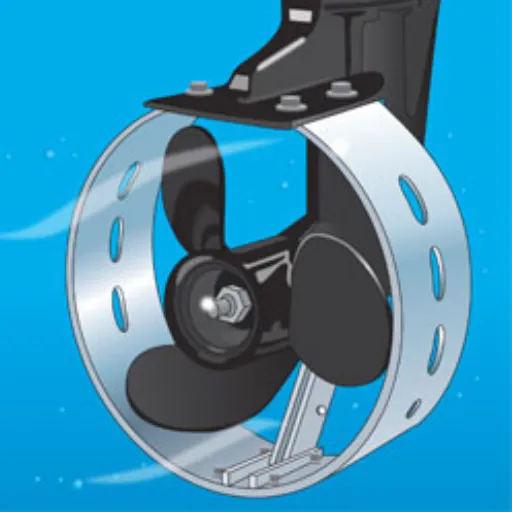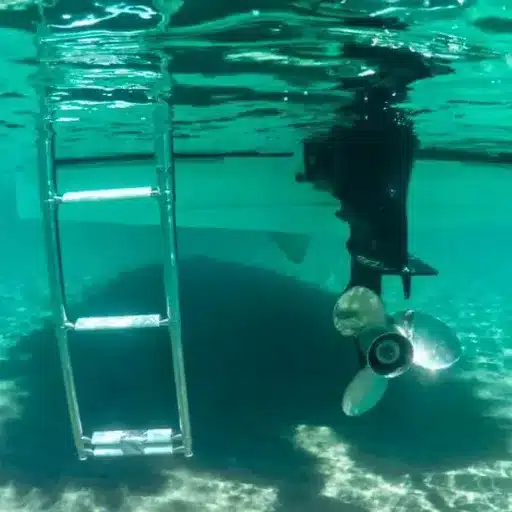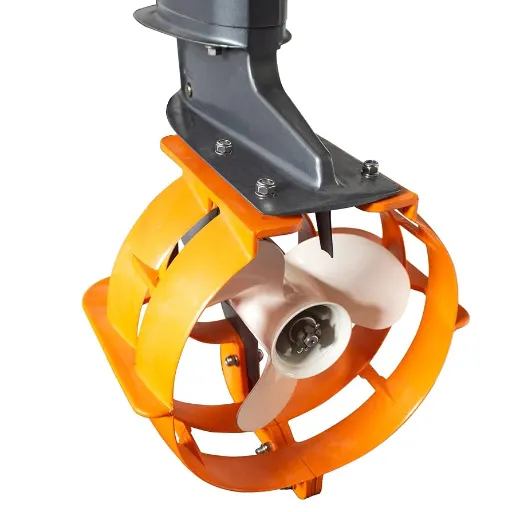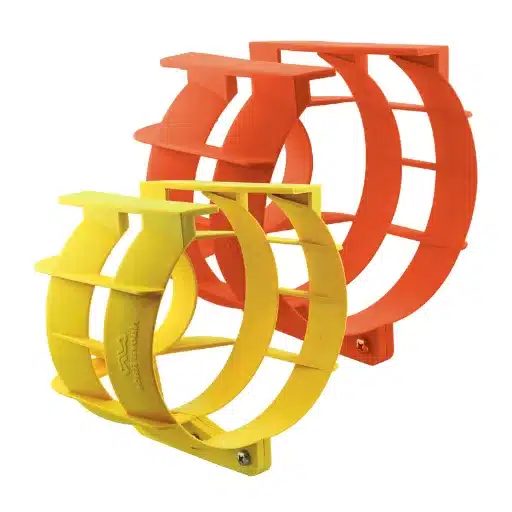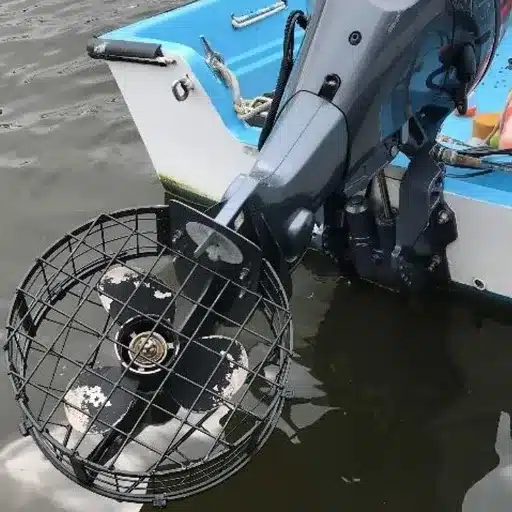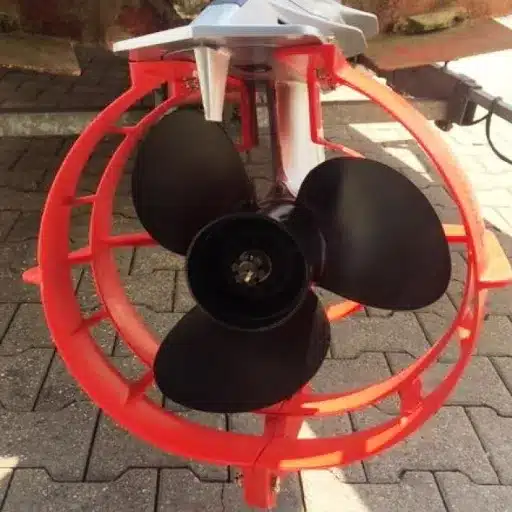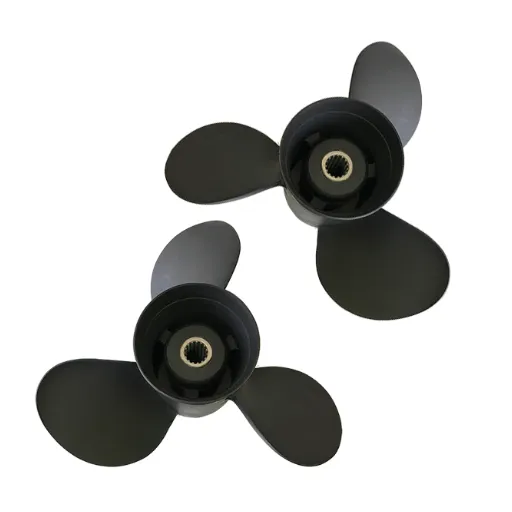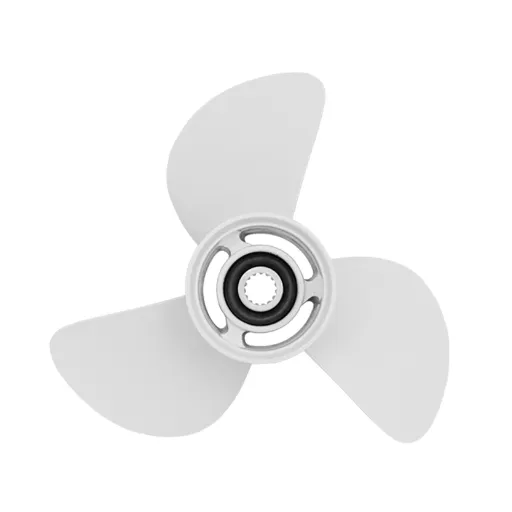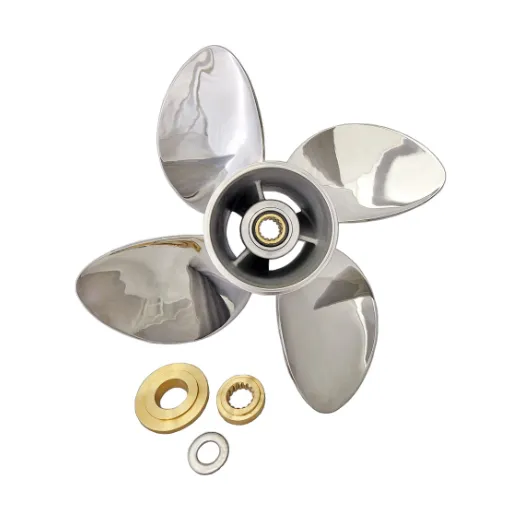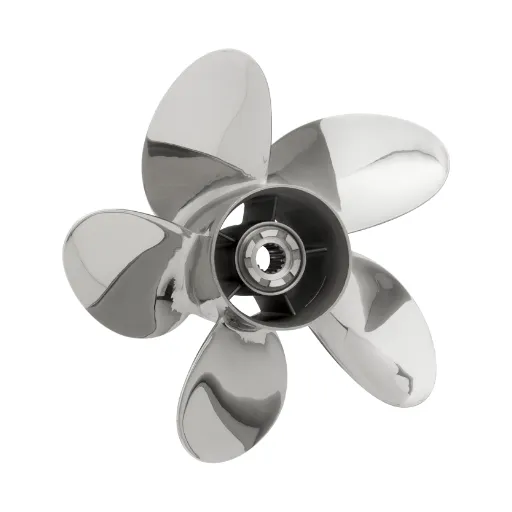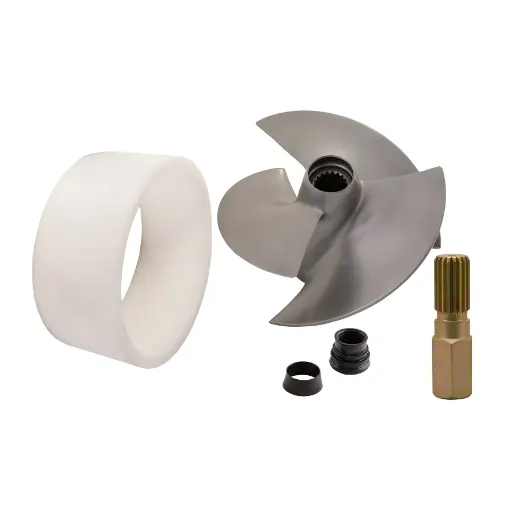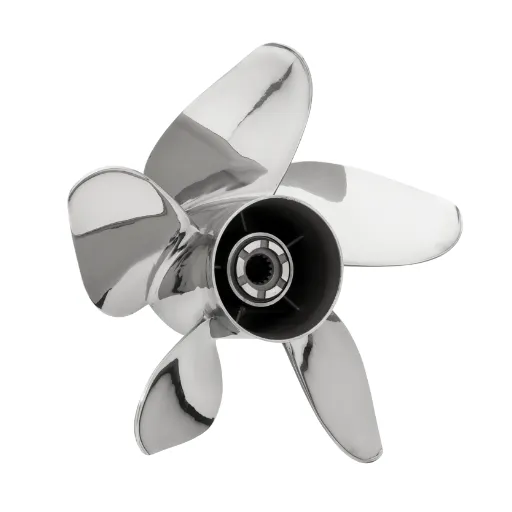From being one of the most cherished pastimes and heavy industries to one that comes with certain dangers, fatal accidents and injuries from propeller strikes have been considered among the most severe accidents. However, the year 2025 has truly brought an unprecedented revolution in addressing these hazards born out of ever-accelerating technological advancements. This new generation of technologies has already reshaped the very equipment of boats, safety procedures, and intelligent systems that prevent accidents from happening on their own. This article explores the latest advancements in marine technology and examines how state-of-the-art tools and systems are shaping the future of boating safety and propeller strike prevention. From AI-powered sensors to automated shutdown systems, learn how technology is taking us around the bay toward a safer future.
Understanding Propeller Strike Accidents
📊Statistics on Propeller Strike Injuries
In cases of propeller injuries, the boating industry remains deeply affected, with these accidents being preventable, resulting in serious injuries and deaths occurring every year. Recent data indicate that between 150 and 200 propeller strikes are reported annually; in many cases, people sustain severe injuries such as deep lacerations, fractures, and the dreaded amputations. Unfortunately, about 20% of the incidents end up claiming lives because the injuries sustained are so severe, or the victim could not get timely help in the middle of the ocean.
Major opponents in such propeller strikes are falls overboard and swimmers. Improper handling of engines, inattentive navigation, and failure to use engine cutoff switches contribute to these accidents. The National Safe Boating Council, however, suggests that these accidents could be avoided in many ways by focusing stricter attention on already established safety practices and technological solutions.
These statistics underscore the need for state-of-the-art safety measures to be developed and implemented, alongside a strong emphasis on educating boaters on safe practices. By addressing root causes and implementing prevention measures, the industry can make significant strides toward reducing these devastating accidents.
⚡General Causes of Propeller Strike Accidents
👤Human Error
Operators who are often inattentive and inexperienced, and do not maintain proper control of the boat, especially in crowded waterways or near swimmers.
🌫️Poor Visibility
Adverse weather conditions, inadequate lighting, or obstructions, can significantly increase the likelihood of collisions resulting in an accident.
🛡️Missing Safety Equipment
Lack of appropriate safety equipment, such as propeller guards, which in the best cases could lessen the injuries, while in the worst could have prevented the accident from occurring altogether.
⚙️Mechanical Failures
Engine breakdowns and steering failures, where operators are unable to avert collisions, intoxication on board and during vessel operation rank very high among causes of strikes.
Another common cause of strikes lies in overcrowding on the boats or unplanned entries into the water by passengers. In addition to accidents caused by mechanical failures, such as engine breakdowns and steering failures, where operators are unable to avert collisions, intoxication on board and during vessel operation rank very high among causes of strikes because it impairs judgment and reaction time, creating hazardous situations.
These factors underscore the need to promote safety measures vigorously. These include maintaining equipment regularly, training operators adequately, and consistently using protective technology to reduce risks and ensure safe boat rides for everyone.
🧠The Need for Awareness in a Strike Preventive Mechanism
The reduction of risk and prevention of accidents in the boating field are highly dependent on awareness. Operators aware of navigation rules, waterway traffic patterns, and environmental conditions can make informed decisions to avoid collisions. According to studies, distraction or inattention contributes to a significant percentage of accidents at sea. Conscious operators can respond quickly when changes occur in the scene, such as the appearance of obstacles, movements of other vessels, or adverse weather conditions.
Additionally, tools and instruments such as GPS, radar, and collision detection can play a proactive role in helping operators maintain situational awareness. Public safety campaigns blaming the consequences of inattention while operating a vessel have also been effective in raising community awareness and education. By combining personal vigilance with technology and continuous training, the odds of strikes can be significantly mitigated, maintaining safer waterways for everyone.
Essential Equipment on a Boat for Propeller Safety
🦺Life Jackets and Safety Roles
Life jackets rank as the primary safety item aboard any vessel. They are designed to keep individuals afloat with their heads above water in the event of an emergency, whether from falling overboard or a vessel capsizing. Modern-day life jackets utilize buoyant materials, such as foam or inflatable chambers, to provide instant buoyancy and support once in the water.
Beyond just flotation, life jackets also act as a means of prevention. Their bright colors and reflective materials increase the likelihood of being spotted, which is especially important during search-and-rescue operations conducted in low-light conditions. Progress in technology also led to the manufacturing of life jackets capable of housing features such as personal locator beacons (PLB and whistles to call for help. Studies in recent years have shown that the enforcement of life jackets drastically reduces drowning incidents, and boating accident prevention agencies often cite the use of life jackets as one of the most essential safety measures.
Ensuring life jackets fit correctly and are well-maintained maximizes safety for all boaters and passengers, thereby reducing another hazard on the water.
🔌Ignition Safety Switch & Lanyard System
| Feature | Function | Safety Benefit |
|---|---|---|
| Kill Switch | Immediate engine shutdown | Prevents runaway boat scenarios |
| Lanyard System | Connects operator to engine control | Automatic activation when operator falls |
| Wireless Technology | Cordless operation with same safety | Enhanced freedom without compromise |
An ignition safety switch, or the kill switch, is an essential safety device in watercraft accidents. It incorporates a lanyard that secures the operator to the vessel’s ignition device. After the operator is expelled overboard, the lanyard disengages, immediately shutting off the power to the engine and preventing the ship from continuing on an uncontrolled path. This truly safeguards individuals from being injured by runaway boats, including the operator himself.
The importance of having and using the ignition safety switch cannot be overemphasized. These safety conditioners have been touted by boating safety initiatives as being the most effective in reducing fatalities and accidents. With legislation being enacted in some jurisdictions stipulating the use of such systems, the incidence of accidents involving unmanned vessels has drastically lessened. The lanyard is secured to the operator while the boat moves. Another newer advancement in technology is wireless kill switches. These systems provide more freedom for the operator because they are cordless, yet still offer the vital safety function. By integrating these systems and encouraging widespread compliance with such measures, boaters could enjoy a safer experience while having fun in the water.
🔄Self-Circling Devices: A New Trend in Boating Safety
Revolutionary Safety Technology
Automated vessel control in emergency situations
In terms of boating safety, several self-circling devices offer the ultimate fail-safe solution in emergency cases. Such systems have been designed to steer the boat into an automatically controlled circuit if the person steering were to become incapacitated or ejected from the vessel. This ensures that the controlled vessel is always nearby, thereby avoiding collisions or the vessel zooming away.
Industry experts have noted that the introduction of these kinds of self-circling systems lends itself to improving rescue time within an incident. According to safety agencies, in recent years, such a system has reduced the likelihood of accidents, as it keeps the vessel in a predictable location where the crew or passengers can be easily retrieved. Additionally, it can work in conjunction with other safety devices, such as a kill switch, to provide broader safety coverage.
Manufacturers are integrating several advanced algorithms with GPS in self-circling devices to increase their accuracy and enhance adaptability for various boating scenarios. These technologies strive to achieve the perfect blend of efficiency and safety, thus making recreational boating an enjoyable and safe experience. This new trend has marked a much-needed modernization in safety efforts and in tackling pertinent boating hazards.
Technological Innovations in 2025 to Prevent Propeller Strikes
🤖Smart Sensors and Alerts for Operators
📡Real-Time Monitoring
Environmental sensors integrated with real-time monitoring can detect potential threats, such as swimmers nearby, underwater obstacles, or sudden changes in water conditions.
🧠AI Algorithms
Advanced algorithms interpret data collected from sonar, radar, and GPS to predict and prevent the onset of immediate risks or accidents.
📱Mobile Integration
Smart sensors can synchronize with mobile devices or remote screens onboard, enabling comprehensive safety monitoring.
During recent years, various smart sensors have emerged, each one capable of providing situational awareness to boat operators. These environmental sensors are integrated with real-time monitoring. They can detect potential threats, such as swimmers nearby, underwater obstacles, or sudden changes in water conditions, to enable instant alerts to operators. Using advanced algorithms, data collected from sonar, radar, and GPS can be interpreted to predict and prevent the onset of immediate risks or accidents, and also suggest possible actions to mitigate or eliminate those risks. The systems and the interface work together to present crucial information unobtrusively to an operator. With improved connectivity and communication, smart sensors can synchronize with mobile devices or remote screens onboard, enabling comprehensive safety monitoring. This combination of technologies enhances safety and operator confidence, thereby significantly reducing occurrences such as prop strikes.
⏹️Automated Systems for Stopping Propellers
An automatic propeller shutdown system is designed to prevent accidental injuries and promote the safe operation of vessels. These systems utilize state-of-the-art sensor technology to detect perilous situations, such as a person entering the water near a propeller. When such instances are detected, an immediate signal is sent to the engine to stop the propeller, thus significantly mitigating the potential for harm.
Key Technical Features:
- Response Time: Millisecond-level detection and shutdown
- Intelligent Algorithms: Advanced threat assessment capabilities
- All-Weather Operation: Functions in rough or calm water conditions
- Variable Visibility: Operates effectively in high or low visibility scenarios
Another technical merit of these systems is that they deploy intelligent algorithms, offering very short response times —sometimes measured in milliseconds —thereby reducing damage to human beings or property almost to zero. Additionally, the systems have been engineered to operate under various conditions, including rough or calm water, as well as high or low visibility, ensuring uniform performance. Statistics demonstrate the effectiveness of these technologies in reducing propeller incidents in both the recreational and commercial sectors of the maritime environment. By installing such systems, operators can provide greater safety to passengers while strictly complying with safety regulations. This generates user confidence and encourages a safety culture throughout the maritime industry.
⚙️Enhanced Propeller Design for Safety
Modern safety-oriented designs that ensure performance are a focus of present-day propeller engineering. The primary ones include shrouded propellers and ducted designs, wherein a physical barrier exists between the spinning blade and the environment. Composite materials are also incorporated into these designs, which increase resistance to wear and tear and intentionally dull the edges to reduce the severity of injuries in the event of an accidental brush with an object.
Environmental Benefits:
- Optimized blade geometry reduces noise pollution
- Improved energy efficiency supports sustainability goals
- Enhanced performance with reduced environmental impact
Among other things, research suggests that such improvements are also present in the environmental category. An optimized blade geometry can prevent noise pollution while simultaneously improving energy efficiency, which is certainly a step in the right direction towards achieving world sustainability goals. In commercial vessels, such designs with safety in mind will significantly reduce liability risk while also conforming to international safety requirements. Maritime transportation is made safer through such improvements in operations, and bolsters confidence in customers.
Best Practices for Boaters to Reduce the Risk of Strikes
✅Pre-Departure Safety Checks
Essential Pre-Departure Checklist
Pre-departure safety checks help safeguard the crew from a strike and ensure that the vessel completes its voyage safely. Beginning with the navigation infrastructure, all installations onboard should be tested for proper operation and calibration to ensure accurate readings. Radar, sonar, and collision avoidance instruments should be similarly checked to ensure that obstacles and marine life are detected in time.
Test GPS, radar, sonar, and collision avoidance systems
Safety Equipment
Verify life jackets, fire extinguishers, and first aid kits
Hull & Propellers
Check for damage or debris that could hinder performance
Weather & Charts
Update with latest conditions and nautical charts
Equally important is verifying that safety equipment, such as life jackets, fire extinguishers, and first aid kits, is on board and in accordance with local requirements. Regular checks on the hull and propellers for damage or debris must be conducted to prevent such issues from hindering the boat’s progress. Weather checks should also be conducted, and the ship should be updated with the latest nautical charts to enhance situational awareness. In ensuring that all these areas of safety are well-honed before going out, a mariner will minimize accidents and enjoy an unforgettable experience.
🎓Education and Training for Boat Operators
Higher education ensures that boat operators learn safety, efficiency, and regulations. Boatsmen acquire the foundation for navigation, weather, and the law from any formal boating instruction. They often instruct their students on reading nautical charts, piloting techniques, and emergency procedures.
Besides classroom instructions, there is practice or supervised instruction in real-life scenarios that could fortify the operator’s confidence and foster skill development. Many maritime agencies and organizations hold workshops emphasizing special skills, such as adverse weather handling or operating sophisticated navigation systems.
Research has shown that the statistics for accidents are significantly reduced for boat operators who have been properly trained, making continued training of utmost importance. Additionally, an operator who stays informed about all changes in boating technology, safety equipment, and regulations can more easily adapt to a new maritime landscape. On a priority basis, education and ongoing training for boaters ensure their safety and, therefore, that of their passengers and fellow mariners.
🚨Emergency Protocols for Overboard Situations
⚠️ Critical Emergency Response Protocol ⚠️
Immediate action must be taken the moment an overboard situation arises to preserve the safety of those involved
Such protocols include the following, with the consideration that they can aid in the success of a rescue act:
-
1
Sound the Alarm
Announce to everyone on board by shouting, “Man Overboard!” If possible, appoint someone to inform the crew or captain of the situation as soon as possible.
-
2
Maintain Visual Contact
A crew member must be designated to maintain conscious visual observation of the person in the water by continuously pointing in the individual’s direction to assist the rescue team in obtaining accurate bearings, especially in adverse weather conditions.
-
3
Throw a Flotation Device
Toss a life ring, life jacket, or any other flotation device toward the person. Modern-day flotation devices could have automatic lights or whistles that aid in locating a person.
-
4
Activate MOB Functionality
If your boat is equipped with a GPS or chart plotter that features an MOB (Man Overboard) button, activate this feature to mark the exact position of the occurrence and provide a guide back to that position for retrieval.
-
5
Adjust Vessel Position
Maneuver the boat back to the person, taking into consideration wind, current, and wave conditions, and approach cautiously to avoid injuring the individual by propeller or hull.
-
6
Use a Rescue Line
A rescue line should be cast within reach for the person overboard who is conscious and able to hold onto it. Should the person be drifting closer to the vessel, he can be reached using a boat hook.
-
7
Prepare for Recovery
Assist the person back on deck using a boarding ladder, sling, or rescue davit, depending on the person’s condition and the equipment available. For unconscious persons, make sure to have at least two people to lift them.
-
8
Administer First Aid
Once aboard, assess the person’s condition and provide first aid as necessary. Be prepared to treat for hypothermia, especially if in cold-water conditions, and seek professional medical assistance as soon as possible.
By grasping and practicing these procedures, both the boat operator and passengers improve their chances of a successful rescue in an overboard emergency. In conjunction with this, the crew should practice occasionally with man-overboard drills to be prepared for a quick and efficient response in case such an issue arises.
Successful Implementation of Safety Equipment
📈Real-Life Examples of Propeller Injuries Prevention
Propeller injuries have seen significant reductions in incidence with innovations in safety development, thereby advancing education and technological improvements. For example, propeller guards have been developed by manufacturers to provide a physical barrier between the propeller and the victim or anyone in the water. A study of these boats fitted with propeller guards has found a clear reduction in injury severity during propeller incidents, thus testifying to the effectiveness of this technique.
🌊Florida Waters Success Story
A perfect example came from Florida waters: in that instance, a wireless engine cut-off system stopped the engine mere moments after the operator fell overboard, thus preventing a severe accident.
Additional extraordinary life-saving measures are kill switches and wireless engine cut-off systems. If the person goes overboard, for example, these systems will shut off the engine, reducing the chances of an injury caused by an uncontrolled propeller.
Another factor that significantly contributes to injury prevention is education and training. In the broader context, boater safety courses emphasize the importance of maintaining vigilance around swim zones and respecting no-wake areas. Reports have been issued stating that communities with mandatory boater safety training programs experience fewer propeller accidents year after year.
Sonar-based proximity detection developments have placed yet another layer of protection. With these systems, operators receive signals indicating the presence of objects within the water, thereby preventing collisions and enabling them to react instantly. Taken as a whole, these examples demonstrate how technology and education can work together to significantly reduce the risk of injuries from propeller strikes, thereby ensuring that every waterway is safe for all.
🤝Community Efforts in Boating Safety Awareness
My concern for boating safety has always been personal. Instilling responsibility in local communities, in line with promoting safer waterways, is, in my view, among the most effective measures. Educating and training people through outreach programs has, in my experience, proven to foster awareness of safety issues across all age groups. Workshops and safety demonstrations, for example, provide valuable information about the proper use of life jackets and propeller safety, while also instilling in boaters the belief that prevention can and should be attempted.
Collaboration is another significant factor that has contributed to these efforts. Working with local marinas, community centers, or schools has helped extend the promotion of the safety initiative. The Coast Guard and local boating safety councils have partnered with us to provide resources and focus education campaigns on navigation rules and environmental awareness. When communities come together to share and prioritize safety, the impact is broad and lasting.
Storytelling is something I’ve found to be very effective for creating awareness. The emphasis on real-life cases related to life-threatening accidents or near-misses, along with how such incidents could have been prevented, underscores the importance of vigilance and preparation while on the water. Combined with technological development and campaigns targeted at the communities, everything demonstrates how far-reaching improvements can be achieved when everyone works toward a safer boating experience for all.
📊Impact of New Technology on Accident Rates
Absolutely, this new technology has brought down the rates of accidents on water, and I have witnessed that change. Along with GPS navigation, weather apps, and emergency alert systems, safety and preparedness have been greatly enhanced. In other words, the tools enable individuals to plan their trips accurately while providing real-time updates that prevent the formation of hazardous situations. I particularly rely on navigation systems to avoid dangerous shallow water or hazardous conditions, and I have witnessed firsthand the ways in which this type of technology can facilitate a quick resolution of an accident.
Well, whereas the primary range of use is individual, communication improvement truly changed the game. For instance, the advent of VHF radios with sophisticated distress signaling has cut down emergency response time. I have witnessed situations where swift communication enabled rescuers to locate stranded or otherwise imperiled boaters much more quickly. Additionally, you have these PLBs to enhance water safety, ensuring that even in the most isolated scenarios, help is just a signal away.
To me, it is now clear: Vigilance and experience remain essential human factors that uphold safety, whereas integration of technology has offered an invaluable safety net. Such safety equipment can come in handy for boaters, increasing their confidence and making trips safer for them, whether they are on a leisurely outing or the very first time out for a novice boat operator. The acceptance and utilization of updated technologies will undoubtedly continue to reduce accidents, thereby providing all with a much safer future.
Reference Sources
-
Boating Tech in 2025: A Glimpse Ahead – Discusses advancements like smart boat integration and renewable energy that contribute to safety.
-
Life Proof Boats Selects Lookout – Highlights AI-powered navigation systems enhancing maritime safety.
-
Boating Industry Reveals 2025 Top Products – Features innovative products like AI systems for situational awareness and safety.
-
How to Prevent Propeller Strikes – Offers practical insights into preventing propeller injuries.
-
Propeller Safety – Explains the use of lanyard and wireless ECOS devices to prevent propeller-related accidents.
- Click here to read more.
Frequently Asked Questions (FAQs)
🛥️How to Prevent Propeller Strike While Boating?
Being cautious and attempting to prevent a propeller strike necessitates the use of safety tools, such as a propeller guard and an engine cut-off switch, which ensure that the boat engine will stop should the person fall into the water. Watch out for any such occurrences and always keep a watch out for persons in the water around your boat. Practicing good boating safety, such as going slowly near areas where people may be swimming, is also essential. Another essential topic for all boaters to be aware of is the dangers of propeller strikes.
🔌What does a kill switch do to prevent injuries caused by a propeller?
A kill switch or an engine cut-off switch is a safety lifeline for a small boat. Should the operator go overboard, the device stops engine operation and prevents the boat propeller from spinning at high speed, with devastating injuries. Assurance of keeping the ignition safety switch lanyard attached to the operator at all times must always be given. This creates a safety measure for the operator in case they go overboard into the water. Still, those same provisions will also equally protect others within the vicinity of the water, acting as an excellent propeller safety feature as well. Regular checks on the kill switch functionality would be highly beneficial in ensuring that the switch performs effectively in an emergency.
🚨What to do if someone falls overboard in propeller safety terms?
The first thing to do when anyone goes overboard is to switch the engine off immediately to lessen the chance of a propeller strike accident. The switch-off causes the propeller to stop and may become an opportunity for a propeller strike, which can cause injury. Using the alarm will let everybody know what is going on. Fast communication among the crew is essential for a fast reaction. To help with flotation, pass a flotation device to the person in the water, ensuring that the passenger craft is held far away from the propeller area. Such steps lessen the danger of propeller strikes in that situation.
🛡️What equipment is involved in preventing propeller strikes?
On the very few occasions when a hazard can be averted, some protective measures are lifesavers; propeller guards and safety devices, such as those provided by kill switches, are examples of protective measures. A propeller guard is a physical barrier that prevents access to the propeller when it is in operation. The cut-off switch for the engine is another essential device; in the event the operator falls overboard, it immediately cuts off power to the engine. An additional interlock system for the ladder prevents somebody from driving or engaging the motor while in the water. Maintenance and checks should be carried out regularly on these safety devices to ensure they function as expected when needed.
⚠️How does an injury from a propeller strike happen on a boat?
According to the dictionary, propeller strike injuries occur when the rotating propeller blades of a boat strike a person in the water. Usually, these accidents occur when an engine is not shut off while people are swimming, or when someone suddenly falls overboard. The second hazard for propeller strikes is the boat being in gear while moving around in close range to the person in the water. One can educate boaters about the dangers of propeller strikes and safe boating practices to prevent this serious injury from becoming a common occurrence. Always stay alert and be aware of your surroundings at all times.
🛟What safety measures eliminate the possibility of propeller strikes?
Boat operators should take several precautions to prevent propeller strikes. They should install safety equipment, such as propeller guards, and ensure that the engine cut-off switch is properly functioning and used correctly. Whenever individuals are in the water, the captain must always stop the engine and maintain a secure distance from the propeller. Training should be imparted to all boaters on the hazards of propeller strikes and on how to respond correctly if somebody is knocked overboard. Keeping an eye out for swimmers and reducing speed in the vicinity of people in the water can significantly contribute to avoiding such mishaps. Conducting regular safety drills is another effective way to reinforce these practices amongst the entire crew.




